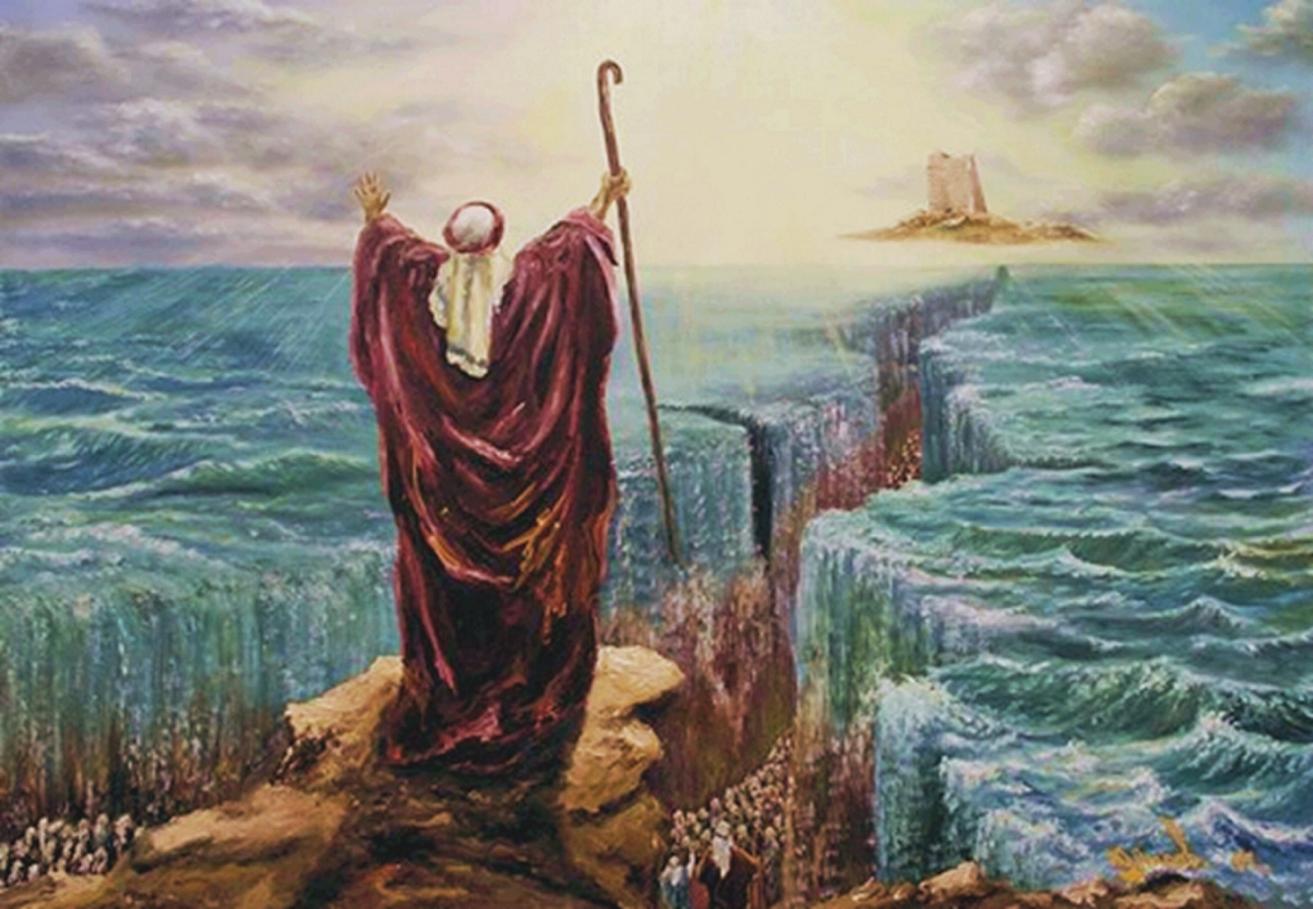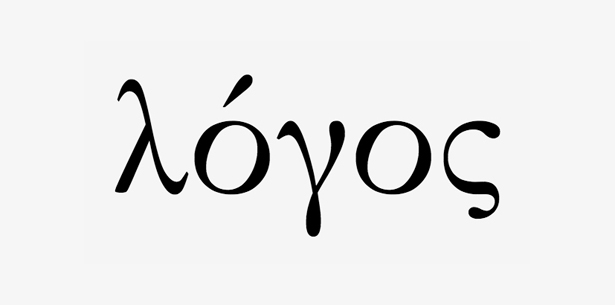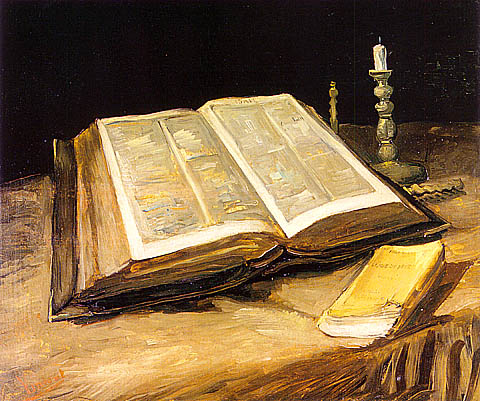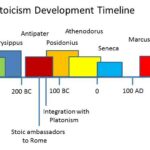A Walk with Moses
Moses and his One God: Jewish Roots
Christianity and Islam are the most wide spread and influential monotheistic religions in the world today by any measure, and both sprung from and were heavily influenced by the monotheistic religions, and metaphysical and philosophical systems, that preceded them most notably Judaism, but Zoroastrianism as a close and far less recognizable second. These influences are evident by the effective incorporation of Judaic mythology and tradition into the Bible and Christian tradition, the explicit references to the Jesus and the Abrahamic roots of Islam in the Qur’an, and less explicitly to the incorporation of many of the themes and divine principles of Zoroastrianism into Christianity. But to fully understand the process by which these monotheistic faiths became so widely adopted, and monotheism became almost synonymous with civilization, one must look into ancient times and analyze the underlying historical socio-political forces that were at play while these faiths and religious systems evolved.
Judaism has its roots deep in ancient history, and in many respects represents one of the oldest and most well documented ancient monotheistic traditions. Some of the historical narrative of the Old Testament can be placed well back into the second millennium BCE judging by the historical evidence from within the Old Testament itself as well as archeological evidence independent of the scripture. The Jewish tradition was born out of the eastern Mediterranean and shows marked Sumerian and Babylonian influence, this can be seen most predominantly in the mythology and historical narrative of Genesis whose creation and flood stories share many common attributes with its Sumer-Babylonian neighbors.
Judaism today, and from its outset upon its founding by Moses, teaches that there is only one God and no other God is to be worshipped other than He, namely Yahweh. The Jewish mode of worship, its religious practices and ritual, and even its ethical and moral precepts, are based upon both an oral and a written tradition as encapsulated in what they call the Torah, the sum total of which is said to have been handed down by Yahweh to Moses directly and are captured in the Books of Moses, or the first 5 Books of the Old Testament of the Christian canon, which encapsulate the heart of the Torah in the Jewish faith.
As far as when Moses might have lived, if you use the events in the Books of Moses themselves and marry the timeline therein to archeological and other historical evidence which more narrowly identifies the timeframe of the Egyptian and Babylonian Pharaohs and Kings for example, you end up with a mid-15th century BCE date give or take for the Exodus, which puts Moses’s life and works somewhere in the middle of the second millennium BCE if we presume he is an actual historical figure which is probably not that far fetched as could be said of many pre-historical mythical figures which in all likelihood had some basis in fact from which their stories emerged. But the oldest extant documents of the Jewish faith however, date from the Hellenistic period some 1000 years or so after Moses supposedly lived, so we’re looking at roughly one thousand years or so of oral tradition before the scripture is actually written down and such writing survives down to us directly. This extant literature include Hebrew and Aramaic papyri with biblical fragments such as the Dead Sea Scrolls, and then literature in Greek such as the Septuagint which was compiled in the late 3rd to middle 2nd century BCE or so.
The Jewish Canon: The Tanakh and the Talmud
The written tradition of the Jewish faith is centered around the Tanakh, which is the name in Judaism given to the canon of the Hebrew Bible, along with the Talmud, which consists of the commentary of thousands of Jewish Rabbis compiled over centuries on topics ranging from law, ethics and customs, theology and philosophy, as well as history and mythology, and provides the basis for Jewish law. According to the Talmud, much of the contents of the Tanakh were compiled by the Men of the Great Assembly by 450 BCE or so, although this date is disputed among modern scholars, most of whom believe that the canonization of the Tanakh as it stands today wasn’t finalized until the 2nd century BCE.[1] The Tanakh is broken down into three sections, almost all of which are included in the Christian canon as part of the Old Testament: the Torah, or “teaching”, the Nevi’im or “prophets”, and the Ketuvim or “writings”. The Torah represents the heart of the Jewish written tradition and is loosely translated into English sometimes as “law”.
The Torah consists of the Five Books of Moses, i.e. Genesis, Exodus, Leviticus, Numbers and Deuteronomy. These five books are also sometimes referred to as the Pentateuch, which means “five books” in Greek. The Torah tells the story of the history of the Jewish faith from the origin of the universe to the subsequent early generations of mankind, along with the detailed account of the life of Moses and his leading of the Jews out of Egypt back to their homeland in Israel. It is in this part of the Torah that we find the story of Moses and the Ten Commandments, within which the Jews (and related Abrahamic religions which stem from it) are bound to worship Yahweh as the one and only God, are prevented from worshipping idols, etc. The Nevi’im, or “Prophets”, consists of eight books and cover the history of the Jewish people from the time Jews enter the land of Israel until the time of Babylonian captivity under the prophet Judah in the early 6th century BCE. Books of the Nevi’im include Joshua, Judges, Samuel I & II, Kings I & II, Isaiah, Jeremiah, and Ezekiel. The Ketuvim, or “Writings”, sometimes referred to by the Greek name Hagiographa, consists of eleven books which include the Book of Psalms, Proverbs, Job, Ecclesiastes, Daniela and Chronicles among others.
The Tanakh and Talmud were mostly written in Biblical Hebrew, although some parts written in Aramaic, a closely related Semitic language. Ancient Hebrew and Aramaic (as well as Arabic) are in the Afro-Asiatic/Semitic family of languages, a distinct branch of the language tree from the Indo-European languages from which Sanskrit, Greek, Latin and most modern European languages descend, the branch which includes English of course. Ancient Hebrew and Aramaic were written in an alphabet system that was closely related and derived from the Phoenician alphabet system which is also the parent alphabet for the Greek, Arabic, and Latin/Roman alphabets. The lineage of these different ancient languages and their corresponding alphabets is important because it implies that direct translations of some ancient Hebrew words are not found or are lost in translation in modern European languages[2].
Writing and Language: The Codification of Sound and Meaning
Alphabet systems of course, i.e. the systems of writing used to represent spoken words or concepts, are correspondents to the spoken word – letters grouped into words and in turn sentences collectively represent words that are strung together in some fashion that convey meaning. In other words a spoken language and its alphabet are related but not necessarily equivalent, which is why it’s impossible for example to know exactly how some ancient dialects and languages were pronounced even if the written language survives down to us[3]. Furthermore the development of alphabet based language systems in general, a development of the second millennium BCE or so, represents a major evolution in the history of mankind, reflecting man’s ability to codify and document much more abstract and complex concepts than previous generations that had yet to invent alphabet based writing systems, and allowing for a much more accurate transcription and communication of ideas. Contrast today’s, or even Ancient Greek or Latin, alphabet systems/languages with the first writing systems that mankind developed – for example cuneiform (circa 4th millennium BCE) which was the form of writing used by the ancient Sumer-Babylon peoples, or the somewhat later (circa 3rd millennium BCE) Egyptian hieroglyphs, both systems of writing which were not (at least initially) alphabets per se, but were “idea” or “picture” based writing systems consisting of what linguists call logograms, aka ideograms or pictograms, where each symbol represented a specific concept or idea.
Philosophers like Plato and Aristotle that lived prior to the invention of alphabets, or prior to the invention of writing itself for that matter, did not have the luxury of being able to communicate sophisticated ideas outside of oral traditions, mouth to mouth so to speak. Note that oral communication in and of itself does not distinguish mankind from the rest of the life on the planet, for example whales or apes can communicate with each other orally and have even been shown to have different “dialects” that vary between geographic regions and specific names, or sounds, for individuals. In many respects, what distinguishes mankind from the rest of the species on Earth is writing, a development which supports the systematic construction of ideas and concepts that in turn allowed mankind to flourish, and ultimately dominate, life on Earth.
Prior to the development of writing however, for tens of thousands of years at least, mankind (homo sapiens) leveraged the same tools as many of the other species on the planet for communication, namely oral communication and the creation of sound vibrations to communicate ideas between individuals. Hence the sacred perspective mankind had on almost all ancient language and forms of writing – the Sanskrit of the Indo-Aryans, the Hebrew of the Jews, and even the hieroglyphs of the Egyptians, they all believed that language and writing itself was wrapped up in and fundamentally related to the divine, as they perceived the whole world to be essentially.
An Example: Torah, Nomos and Lex
As an example of how a word, a concept, can be disfigured and lose its fullness and richness of meaning as it moves through successive languages and centuries and the underlying socio-political and theological context is lost, let’s look at how the Hebrew word Torah, which carries so much significance in the Jewish community, has come to be more understood as law or custom rather than the full revealed and complete theological and spiritual framework that it implied to its ancient ancestors. The word “Torah” in Hebrew is derived from a root that means to “guide” or “teach”, so a good translation for the word directly into English might be “teaching”, “doctrine”, or “instruction”. But in the Greek Septuagint which was transcribed in the first or second century BC in old Koine Greek, the Hebrew torah was translated to the Greek nomos, which loosely translated to English is “law” or “custom” but in practice actually had a much more complex and rich meaning in the ancient Greek civilization from which the word emerged.
The translation of torah to nomos, and in turn to the its Latin successor lex, which has a much more direct association with what we consider “law”, has historically given rise to the notion that Torah signifies or emphasizes laws or customs rather than the implying the complete historical and socio-religious narrative captured in the scripture of the Jewish faith, i.e. “teaching”. A Greek Orphic hymn to the god Nomos illustrates its depth of meaning of this concept to the Ancient Greeks, at least to those who used the word to translate the Hebrew torah in the few centuries before Christ, which gives the reader perhaps a more broad understanding of what Torah really signifies in Hebrew:
“The holy king of gods and men I call, heavenly Nomos, the righteous seal of all: the seal which stamps whatever the earth contains, and all concealed within the liquid plains: stable, and starry, of harmonious frame, preserving laws eternally the same. Thy all-composing power in heaven appears, connects its frame, and props the starry spheres; and unjust envy shakes with dreadful sound, tossed by thy arm in giddy whirls around. ‘Tis thine the life of mortals to defend, and crown existence with a blessed end; for thy command alone, of all that lives, order and rule to every dwelling goes. Ever observant of the upright mind, and of just actions the companion kind. Foe to the lawless, with avenging ire, their steps involving in destruction dire. Come, blest, abundant power, whom all reverse, by all desired, with favouring mind draw near; give me through life on thee to fix my sight, and never forsake the equal paths of right.”[4]
So the Greek nomos, at the time that the Hebrew Old Testament was transcribed into Greek, is akin to the maat of the Egyptians, the personification of which becomes the Greek god Nomos in the Orphic tradition. Having said that, given how steeped in tradition and custom the Jewish faith is, still following today in many respects the ways and customs of the ancient Judaic hunter/gatherers that made it down through the Books of Moses to subsequent generations, one can see why an association with Torah and “law” could have developed over the centuries and stuck, but the true meaning of the word and its relation to the Jewish faith in general is best understood when looking more closely at its etymology. Words and ideas lead to understanding, or misunderstanding as the case may be.
Moses the Prophet Scribe: Fact or Fiction
Getting back to the history and evolution of Judaism though, given the dating of written Torah toward the end of the first millennium BCE at the earliest, and scholars best guesses as to when Moses actually lived, we were left with at least a thousand years or so before the teachings of Moses were actually transcribed to paper, leaving plenty of room for doubt and question as to whether or not a) Moses was the author of the Books attributed to him, or b) what the actual socio-political factors were that drove its adoption and prevalence among the Jewish people for a thousand years after Moses died and handed over the care for the Jewish people (and state) to his successor Joshua.
Ancient oral traditions were powerful no doubt, but how much was lost or transformed within these 1000 years before the Jewish canon was transcribed by the Men of the Great Council in the 5th century BCE and the centuries thereafter? This oral tradition problem, or prophetic separation if coin a term, existed in almost all religious systems, at least the ones that are most commonly practiced today. Even the Qur’an was not written down by Mohammed himself, implying that even if we leave aside the problems of language and socio-political interpretation of the text, we’re still left with some level of prophetic separation, the time period and possible miscommunication of ideas between what the prophet actually said, or communicated, and what was actually written down, or transcribed. This is reflected in the Islamic tradition by for example slightly different versions of the Qur’an that have persisted down to present day.
As far as authorship goes for the Pentateuch itself, it is very much debated by modern scholars and theologians as to whether or not it can be established that Moses was in fact the true author, although the fact that the five books provide a consistent and cohesive narrative would seem to indicate that there was a single author or editor who compiled at least these 5 books. Furthermore, there are plenty of references in the Books of Moses themselves, as well as throughout the rest of the Old Testament and even in the New Testament, that indicate that Moses is in fact the author in question, but identifying whether or not this individual was in fact the historical Moses or some other later individual who later wrote down the narrative remains a matter of speculation. [In the author’s view it was more likely that the latter were true, which would be consistent with most other ancient religious traditions where various written texts were compiled under the name of some historical prophet at some later date – the Vyasa of the Vedic tradition, Zarathustra of the Avestan lore, and even Orpheus being examples of such transcription.[5]
Conclusion: A Prophet, A Canon and a Faith
The core of the Jewish faith and tradition however rests in the Torah, and from the Jewish vantage point its author, at least the first five books, is Moses. The Moses to whom Yahweh revealed his message to directly, which was captured in the Torah, in both written and oral form, and passed down through the ages via the Rabbinic scholars and teachers into present day. According to the Jewish tradition, the contents of the Torah were “revealed” to Moses by Yahweh himself, in the very same way the Zoroastrian, Christian and Islamic faiths had at their core the belief that their scripture was revealed by the one true God of their respective faiths through their respective prophets – Zarathustra, Jesus and Mohammed respectively[6].
But with Moses and Judaism, as was the case in each of these other ancient monotheistic traditions, the prophet taught the message of the one true God to students and followers, their people, and then generations after these teachings were transcribed from the oral tradition into written form in order to unite its people, each revealed tradition transcribed in the language that was prevalent in the civilizations within which the religions flourished. For the Jews it was Ancient Hebrew, for the Zoroastrians it was Old Avestan, for the Christians it was Greek and then Latin, for the Muslims it was Arabic and Atenism it was hieroglyphs. The language within which each of these ancient religious frameworks was documented reflected and mirrored the civilization within which they took root, each civilization unique in its own way and this uniqueness was reflected in the prevalent language and form of writing which was most common place, for language and civilization evolved together no doubt.
But the development of these religious systems, when looked at from the perspective of the context of the civilization from within which they emerged, along with the canonization of the scripture itself, shared the same basic evolutionary structure. [Atenism, if we could call it a “religious system” is perhaps the lone exception but you could argue that even this tradition had a prophet, the Pharaoh himself who was a representation of Aten in human form and therefore the “scripture” and writing surrounding the faith, given that hieroglyphs themselves were viewed as a divine manifestation as well, could be looked at as “revealed”.] So with the Jewish monotheistic tradition then, we see some outside influences on the scripture itself from Sumerian, Babylonian and other Canaanite mythos, but the faith, as with all of the Abrahamic traditions, is centered around the belief in the direct revelation of the Word of God to its prophet, Moses, and the subsequent transmission and codification of this revelation to its people. But what should not be lost, and is true most certainly for Christianity and Islam as well, is that the canonization and standardization of the faith and its practices down through the centuries after the passing of its prophet, was intended to unite its people, and somewhat distinctly for the Jews, to legitimize and establish their ancestral homeland in Israel.
[1] There is also credible historical evidence at least that indicates that the final Jewish canon in its present day form was still as yet finalized by the first century CE, as reflected for example in the writings of Jewish historian Josephus among others, see https://en.wikipedia.org/wiki/Tanakh#History.
[2] For example the translation from the original Hebrew of the phrase “Ten Commandments” is apparently a fairly late rendition of the Hebrew which is perhaps more directly translated into English as the “ten statements” or “ten sayings”. The statements are given in 17 verses in both Exodus (20:1-17) which tells the story of when they are initially given to Moses and then in Deuteronomy (5:4-21) where God re-states the commandments to the younger generation who are entering the Promised Land.
[3] This point becomes relevant in linguistics when for example word pronunciation becomes an important part of distinguishing and categorizing language families.
[4] Orphic Hymn 64 to Nomos (trans. Taylor) (Greek hymns C3rd B.C. to 2nd A.D.) :
[5] See http://bible.org/seriespage/introduction-pentateuch for a fairly detailed account of the scholarly debate and evidence of the authorship of the Pentateuch.
[6] Vedanta as reflected in the Upanishads and the Vedas holds the same belief, namely that the scripture was divine revelation and therefore was to be held sacred.









Leave a Reply
Want to join the discussion?Feel free to contribute!